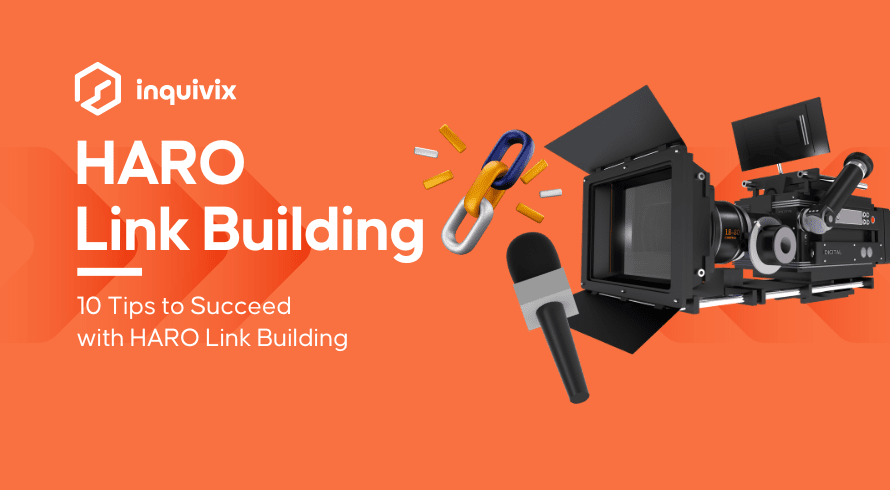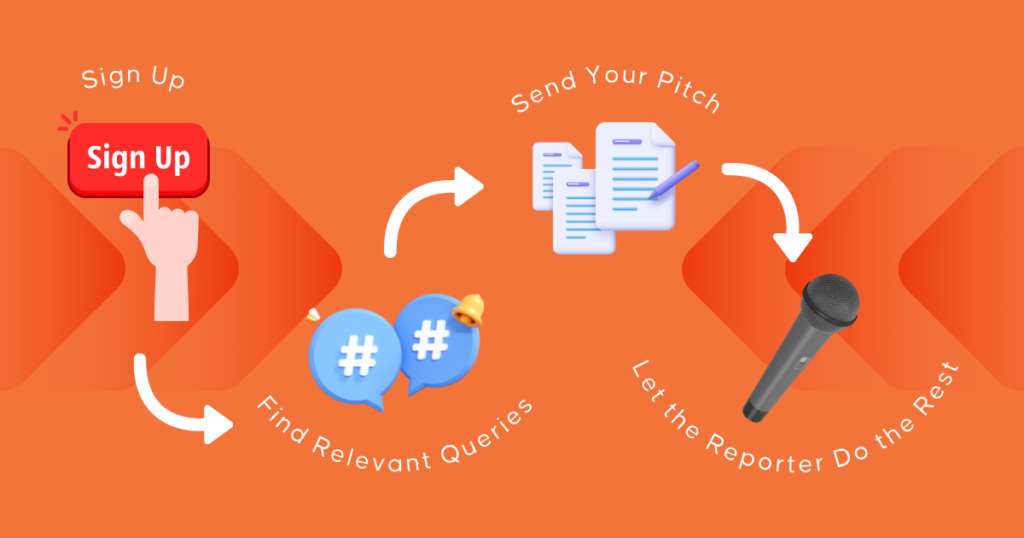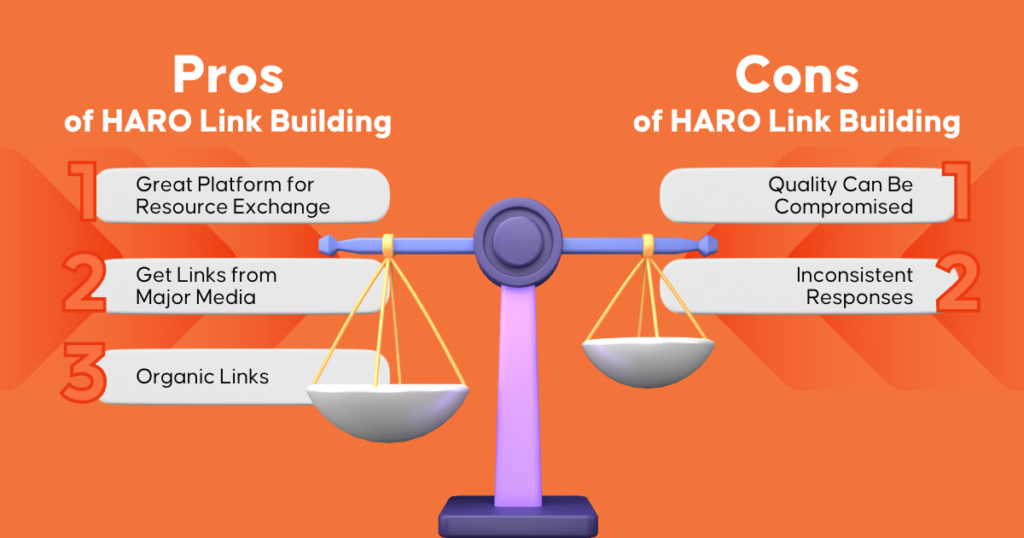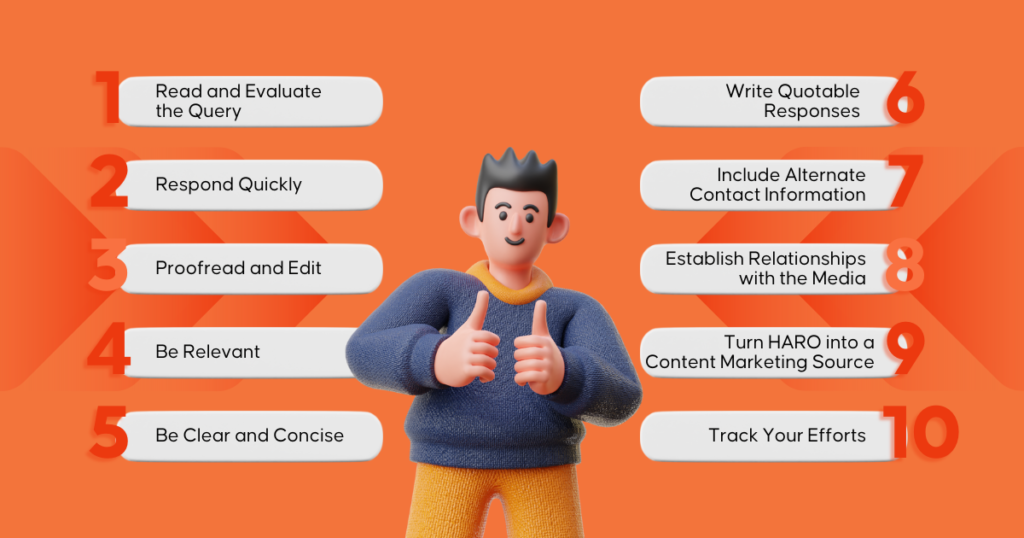Inquivix HQ
1-903, 18 Eonju-ro 146-gil,
Gangnam-gu, Seoul, Korea
06057

HARO link building service is one of the best ways to grow your link profile. But what is it? Is it worth investing time and effort in HARO?
Are you looking to boost your website’s SEO with HARO link building? If so, you’re in luck! In this blog post, we’ll share 10 tips to help you succeed with HARO link building. So what are you waiting for? Let’s get started!
What Is HARO?

HARO, or Help a Reporter Out, is a platform that connects journalists with sources for their stories. It also allows businesses and individuals to get their name out there by offering expert insights or perspectives on various topics. Essentially, it’s a win-win for everyone involved.
HARO was founded in 2008 by Peter Shankman, a businessman-turned-public-relations professional. He saw the need for a platform that would make it easier for journalists to find story sources, and he created HARO as a way to connect the two groups.
Since its inception, HARO has become one of the most popular resources for both journalists and sources. It’s used by some of the biggest media outlets in the world, including The New York Times, Wall Street Journal, and Forbes. And it has helped tens of thousands of people get their expertise featured in these outlets.
This is a great way to get your business name and website in front of a large audience, as well as to improve your search engine optimization (SEO). When a website is mentioned in an article, it’s called an “inbound link.” Inbound links are important because they show search engines that your website is relevant and trustworthy. The more inbound links you have, the higher your website will rank in search engine results pages (SERPs), which means more people will see your website when they perform a search.
How Does HARO Link Building Work?

If you’re interested in using HARO for link building, there are a few steps you need to follow.
Sign Up
Sign up for an account on the HARO website. This is free and only takes a few minutes. You’ll need to provide your name, email address, and some basic information about your business.
Find Relevant Queries
Once you’ve signed up, you’ll start receiving daily emails from HARO with lists of journalist requests. These HARO requests will be organized by topic, so you can quickly skim through and find ones that are relevant to your business.
Send Your Pitch
When you find a request that’s a good fit, send the journalist a pitch outlining why you would be a good source for their story. Make sure to include all pertinent information, such as your name, title, company name, and website URL, as well as any other relevant details about your business or experience.
Let the Reporter Do the Rest
If the journalist like what they see, they’ll include a link to your website in their article. And that’s it! Now you’ve got a high-quality inbound link that will help improve your SEO.
The Pros and Cons of HARO for Link Building
HARO link-building has both advantages and disadvantages.

Pros of HARO Link Building
There are a few key reasons why Haro can be an effective tool for link building.
Great Platform for Resource Exchange
Firstly, it is a useful platform for experts seeking more exposure and journalists looking for content. When you sign up for Haro, you provide information about your areas of expertise and the kinds of opportunities you’re looking for. Then, when a journalist sends out a request for sources via Haro, you’ll receive an email notification if your expertise matches what they’re looking for. This system ensures that you only hear about pitches that are relevant to you, saving you time and energy.
Get Links from Major Media
Secondly, you can land major media links with high domain authority for far less than a PR firm would charge. A PR firm may charge a large amount for their service, whereas Haro is free. Granted, landing a link via Haro does require some time investment on your part but if you’re able to secure a link from a high-authority publication, the ROI can be well worth it.
Organic Links
Finally, Haro links are not “paid” links. You can stay clear of the debated issue of using paid links. When you secure a link via Haro, it’s because the journalist thought your quote or story was interesting enough to include in their article, not because you paid them to do so. As long as you’re providing high-quality information that’s genuinely useful to the journalist’s audience, there’s no reason why they wouldn’t want to include your quote or story in their article.
The Cons of HARO for Link Building
Like everything else, even HARO link building has its disadvantages.
Quality Can Be Compromised
Usually, a customized link-building campaign would vet the sites for quality and relevance for your brand and would only consider sites with high domain authority that is appropriate for your campaign. But HARO does not have such guarantee. You will have to do some extra work to find out more about the journalist and their site.
Inconsistent Responses
The responses from the reporters could be slow and inconsistent. While some reporters respond quickly and clearly state their deadlines, others may take days or even weeks to respond. This makes it difficult to plan ahead and make sure that everything is lined up perfectly before hitting send.
In addition, there is no guarantee that your submission will be used. Even if you take the time to craft a thoughtful, well-written response, there is no guarantee that the reporter will actually use it in their story. In fact, most reporters receive hundreds (if not thousands) of responses and only end up using a handful. This means that even if you do everything right, there’s still no guarantee that your submission will be chosen.
10 Tips to Succeed with HARO Link Building

Getting quoted in established media through HARO can be a great way to build high authority backlinks to your website. But what’s the best way to go about it? Here are 10 tips from industry experts to help you make the most out of HARO link building.
#1 Read and Evaluate the Query
To succeed with HARO link building, start by reading and evaluating the query. What kind of information is the journalist looking for? Is it something that would be relevant to your website? Is it something that you can provide specific, detailed information about? Keep in mind that you are more likely to get selected as a source if you are able to provide specific, detailed information.
#2 Respond Quickly
The next tip is to respond quickly. When you see a query that is a good match for your business, act fast. Because, when a journalist puts out a call for sources, they are typically looking for someone who can provide information ASAP. If you are the first to reply, you are more likely to be included in the article.
#3 Proofread and Edit
One of the most important tips for succeeding with HARO link building is to proofread and edit your submissions before sending them in. This includes fixing any typos or grammar errors, as well as ensuring that your HARO pitch is relevant to the journalist’s query. Submitting a poorly written or error-filled query will not only make you look unprofessional, but it will reduce your chances of getting featured in a relevant article.
#4 Be Relevant
When you are pitching to a reporter, be sure to relevant and interesting information that is related to their query. This will not only increase the chances that your pitch will be accepted, but it will also ensure that the resulting article is high-quality and informative.
#5 Be Clear and Concise
This means that when you are pitching to a reporter, you should get to the point quickly and efficiently. Give the reporter the information they need, and then move on. This can be difficult if you are used to pitching longer stories, but it is important to remember that reporters are often working on tight deadlines. If you can make their job easier by being concise, you will increase your chances of getting your story included in their article.
#6 Write Quotable Responses
If you are looking to get your website some publicity through HARO link building, then you need to make sure that your responses are media-friendly. This means crafting your responses in a way that will make them easy for journalists to quote directly. Make sure to include any relevant keywords or phrases that you want to be associated with your brand.
#7 Include Alternate Contact Information
By including contact information, you’re giving potential linkers multiple ways to get in touch with you. This increases the chances that your link-building efforts will be successful. Be sure to include your phone number, email address, website and social media handles. Additionally, it is important to make sure that your contact information is up-to-date and accurate.
#8 Establish Relationships with the Media
When you develop a good relationship with a journalist or editor, they are more likely to think of you when they are working on a story that might be a good fit for your industry. There’s a good chance that they will link your site when they mention you in a blog post or article.
To build relationships with the media, make sure you are responsive when they reach out to you for comments or quotes. You can also build relationships by proactively pitching story ideas or offering to be a source for future articles. By taking the time to develop relationships with the media you can increase your chances of getting high-quality links from reputable sources.
#9 Turn HARO into a Content Marketing Source
Not every one of your HARO pitches is going to be published. But that doesn’t mean that the work you put into crafting a pitch is wasted. If you don’t get published, you can still use your pitch as the basis for a blog post or article.
This approach can be especially effective if you’re pitching to a big publication with a large audience. You can wait a month after the source request is closed and use the information you gathered to create a valuable blog post or other content for your website.
#10 Track Your Efforts
Link building can be a time-consuming and frustrating process, but the rewards can be well worth the effort. One way to increase your chances of success is to track your efforts. Keep a record of the HARO queries you submit, the responses you receive, and the links you ultimately land.
This will not only help you to gauge your progress, but it will also give you valuable insights into what types of queries are most likely to result in links. In addition, tracking your efforts will make it easier to identify and correct any mistakes you might be making. With a little time and effort, following these tips can help you build links that will improve your website’s visibility and search engine ranking.
Start your Link Building Campaign
Building links is an important part of any SEO strategy, but it can be time-consuming and difficult to know where to start. That’s where Help a Reporter Out (HARO) can help. HARO is a free service that connects journalists with sources for their stories. It’s also a great way to get your website’s name and links in front of a large audience. HARO can be a great way to get high-quality backlinks, but it takes some effort. Follow these tips to make the most of your HARO link-building campaign and see improved search engine rankings and increased website traffic.
Are you looking for someone to help with your link-building strategy? Why don’t you call us at Inquivix? We are one of the leading SEO agencies. Our SEO campaigns include link building services.
FAQs
First, make sure you read the entire request carefully and follow any specific instructions the journalist has provided. Then, introduce yourself briefly and explain why you’re the perfect person to speak on the given topic. Be sure to include any relevant qualifications, experience, or keywords that the journalist has requested. Finally, finish with a professional closing and your contact information.
There are three main ways that HARO can help improve your website’s SEO. First, if you’re featured in a story, there’s a good chance that the publication will link to your website. These links can be valuable in helping to improve your website’s authority. Second, being featured in a story can also lead to increased traffic to your website. And finally, HARO can help you build relationships with influencers in your industry who might be willing to link to your website or share your content in the future.
Overall, HARO is a valuable tool for both personal branding and SEO. If you’re looking to get more exposure for your website, HARO is definitely worth considering.
